A visual summary of the research project. Credit: Yoni Lefevre, 2018
Seeing timeless rebels
CHallenge people’s perspective of ageing
INTRODUCTION
The growing elderly population demands services for older people to innovate their strategies. However, there is a lack of awareness how ageing in general is communicated to the public. The misrepresentation and underrepresentation of older people in the media, e.g. advertisements of care, only contributes to a fear of ageing. According to the Royal Society for Public Health one in four millennials think it is very normal to be unhappy and depressed when you are old (RSPH, 2018:5). In addition, bringing younger and older people together can build mutual understanding to reduce stereotypical perspectives of later life (Abrams, Swift, Lamont and Drury, 2015). Therefore, this research set out to challenge people’s perspectives of ageing through an intergenerational and participatory process using engagement tools.
““Falling for old stereotypes, that would be my fear, I want to be different than all the other oldies, no offence.””
AIMS AND OBJECTIVES
The aim of the study is to have a better understanding of people’s experience of ageing and challenge perceived perspectives of older people. The study explores the development of practical recommendations informed by the lived experiences of adolescents (age 14) and older people (age 80+) to improve the visual representation of older people in the media. Furthermore, this study shares key insights about the participatory research process using engagement tools. The results are a set of recommendations for organisations who values to reduce the stigma around ageing by stimulating positive perceptions and attitudes towards older people.
METHODS
The fieldwork took place from November 2018 until August 2018 and was divided in three research phases.
Timeline of the methods applied during the fieldwork. Credit: Yoni Lefevre, 2018
Capturing people’s responses during one of the pop-up engagements. Credit: Yoni Lefevre, 2018
Phase 1: Contextual understanding
The first phase of the research aimed to generate a contextual understanding of the research setting. It consisted of three public engagements in the form of pop-ups at different locations in Moray. Through the analysis of thematic mapping I could identify a strong tension between positive and negative perspectives of ageing. For example, one of the contradictions was a differentiation in experiencing ageing as “boredom” or “freedom”. Some would describe older people as being “a fossil” or “a rebel”. In addition to the pop-up engagements, I interviewed three professionals who are working for services for older people and asked them to share their thoughts about ageing in Scotland. The conversations supported me to understand the services provided in the Highlands and to position my research focus within the existing ageing context of Scotland.
Quotes of the interviews with professionals. Credit: Yoni Lefevre, 2018
Phase 2: Developing engagement tools
The interview toolkit specifically designed for the interviews in phase 3. Credit: Yoni Lefevre, 2018
The second phase enabled me to explore and develop different physical engagement tools for the final fieldwork. All the tools in this study were designed with a particular attention to the visual identity, which informed the overall communication of the project. For me it was important to represent a research project that would share an unconventional terminology, e.g. avoiding “old” or “ageing” to come up with a project title. First, I completed a questionnaire with a small group of people during the local coffee mornings in the Town Hall to ask about people’s perceptions of growing older. Secondly, I tested the interview questions and engagement tools before the final fieldwork. This preparation phase allowed me to reflect on the lessons learned during the previous fieldwork interventions in order to refine my research focus and prepare for the final data collection.
Phase 3: Final data collection
The final data collection aimed to engage directly with younger and older participants to collectively explore how we can improve the visual representation of older people. I conducted interviews with three older people (age 80+) and two adolescents (age 14) following the interview toolkit developed in previous phase 2 (see image above). The interviews were set out to create an understanding of people’s subjective experiences of ageing and generate input for the participatory workshop. In all three interviews the interview toolkit showed a direct visual accomplishment of the conversation where participants had the opportunity to directly reflect and response on their artefact. This enabled the researcher to sense-check agreement with participants about the information that was collected during the conversation. Furthermore, the generative workshop aimed to explore a common language between the age groups (with an age gab of 60 years) by collaboratively describing and visualising an older person they could both relate to. In addition, it enabled the group to come up with new ideas for improving the visual representation of older people in Scotland. Below an impression of the interview toolkit used during the interviews and discussing each others perspectives of ageing at the generative workshops.
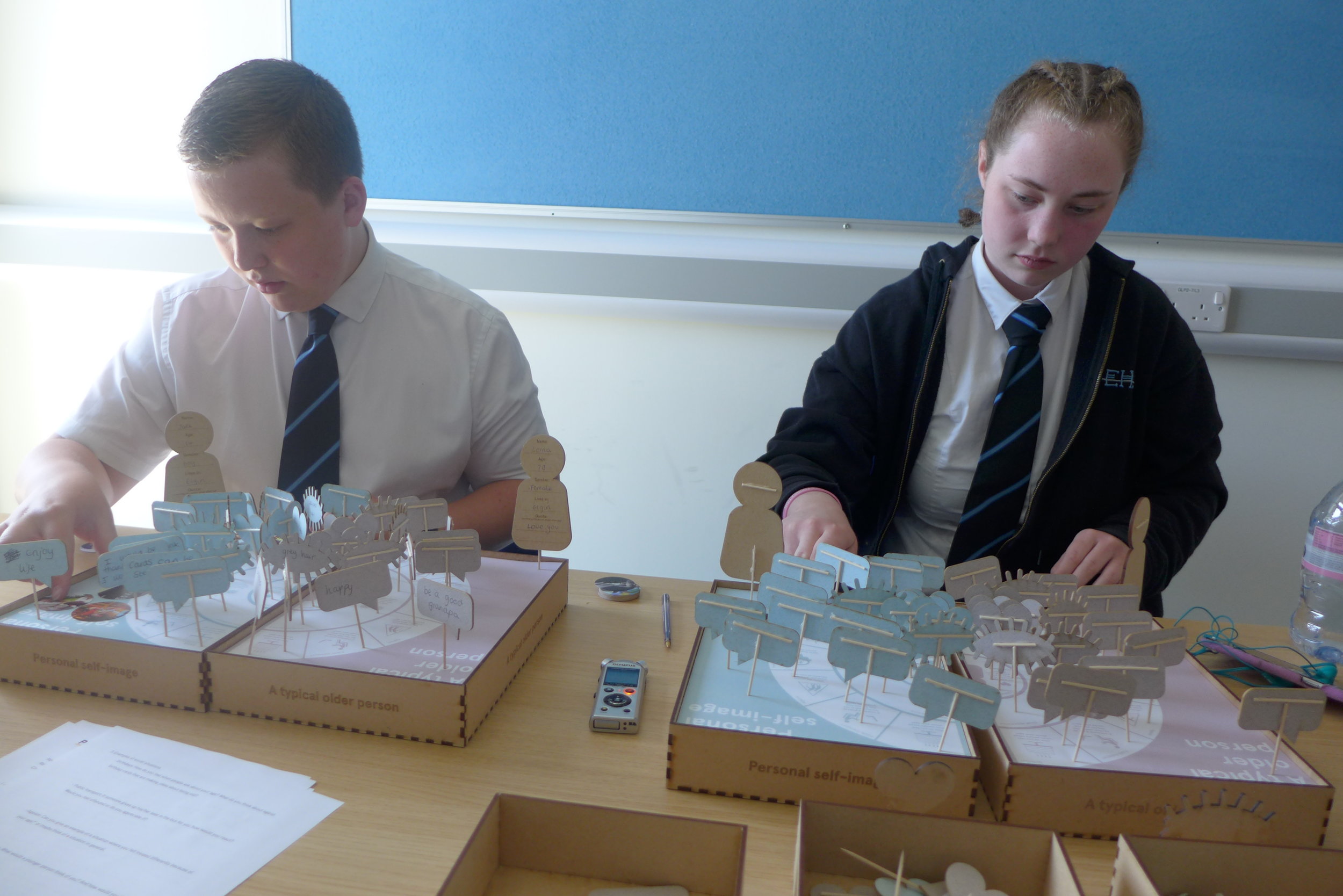
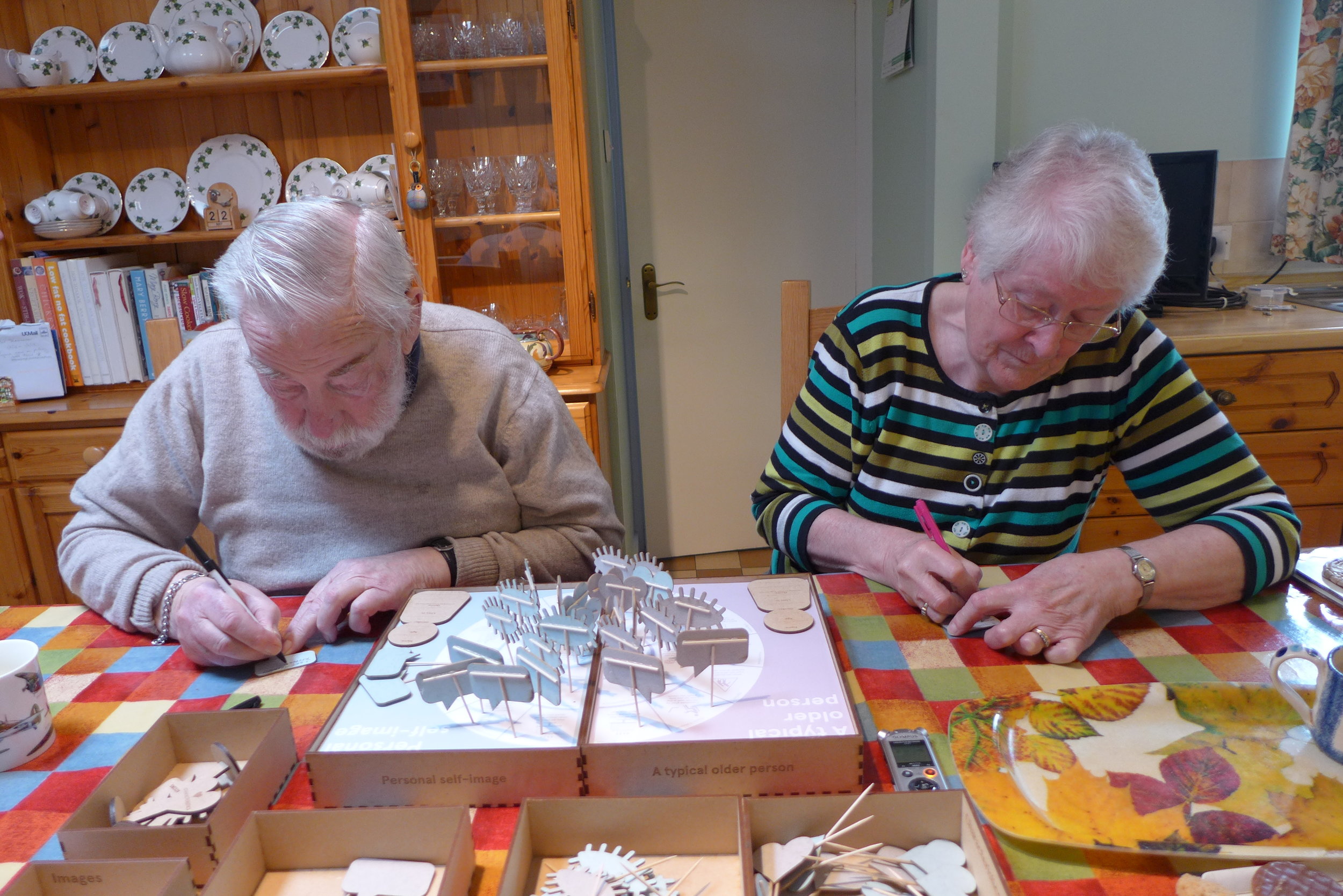
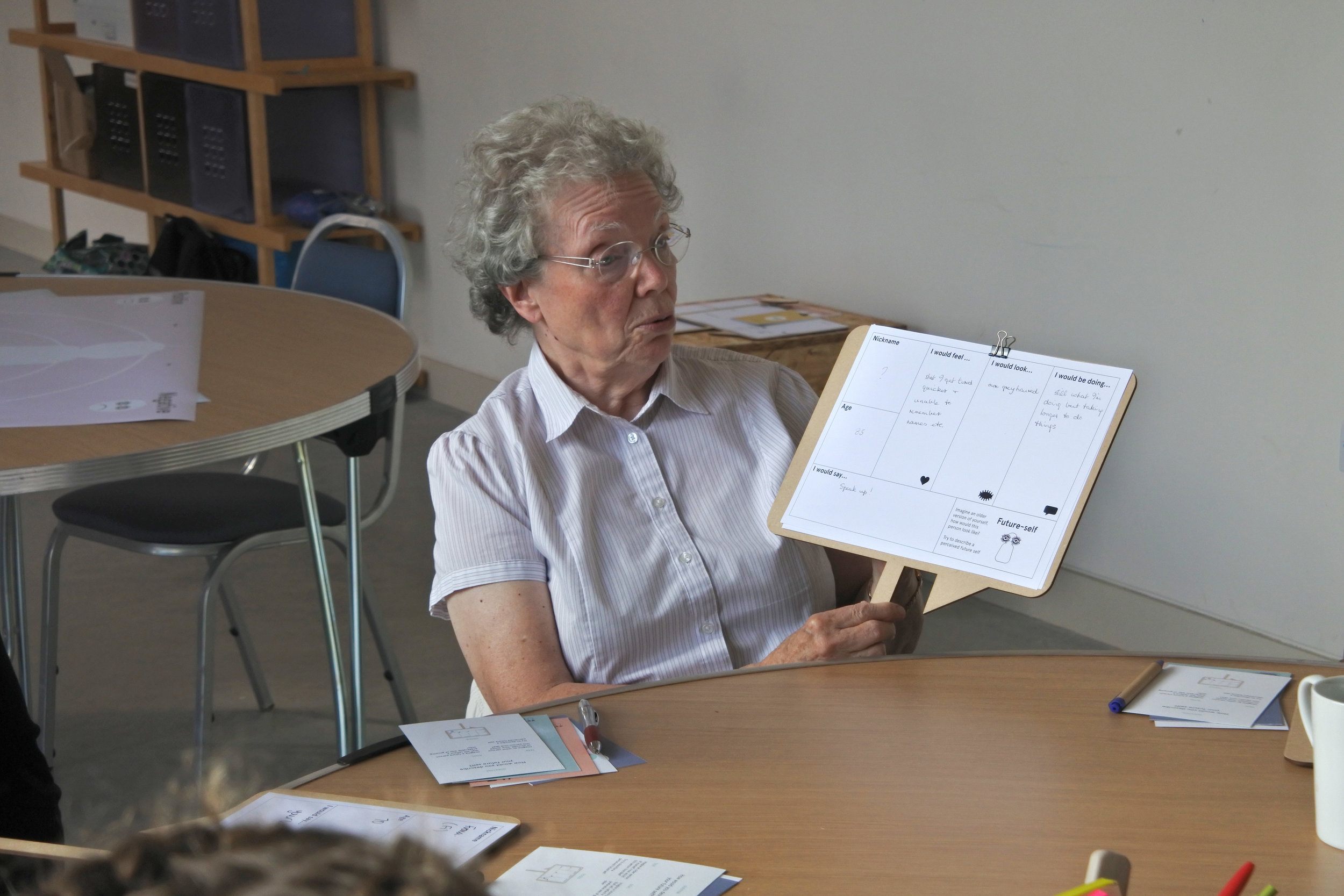
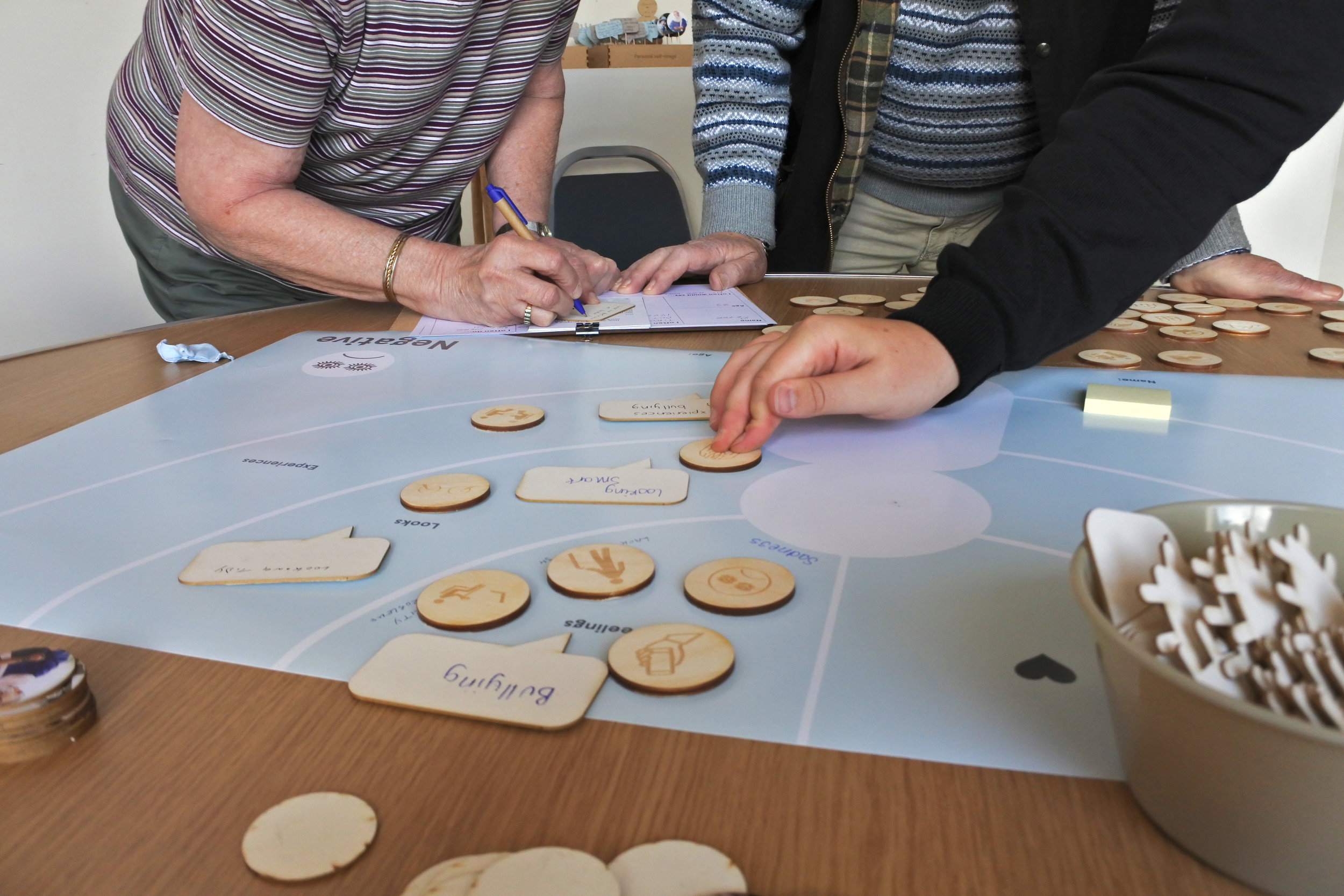
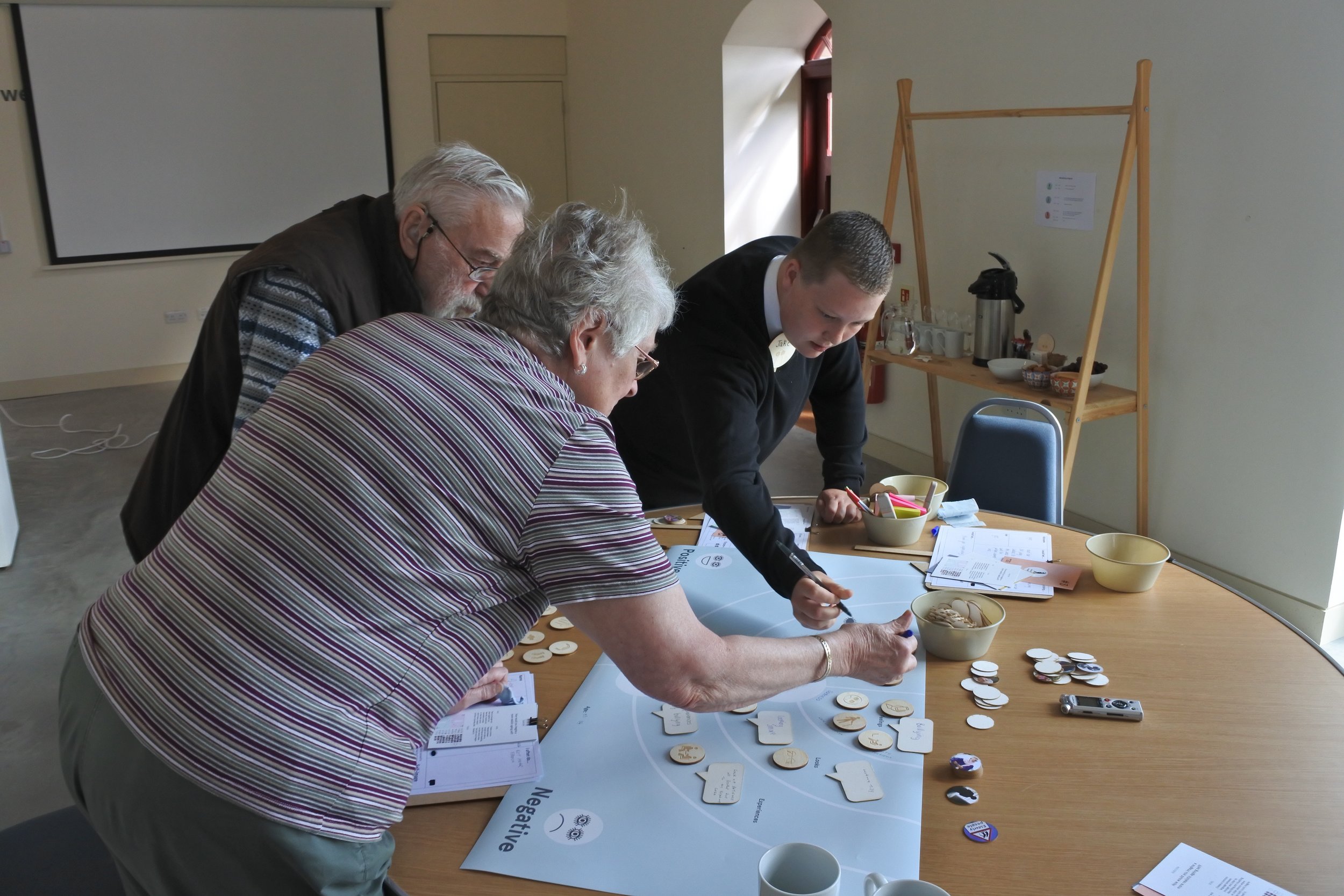
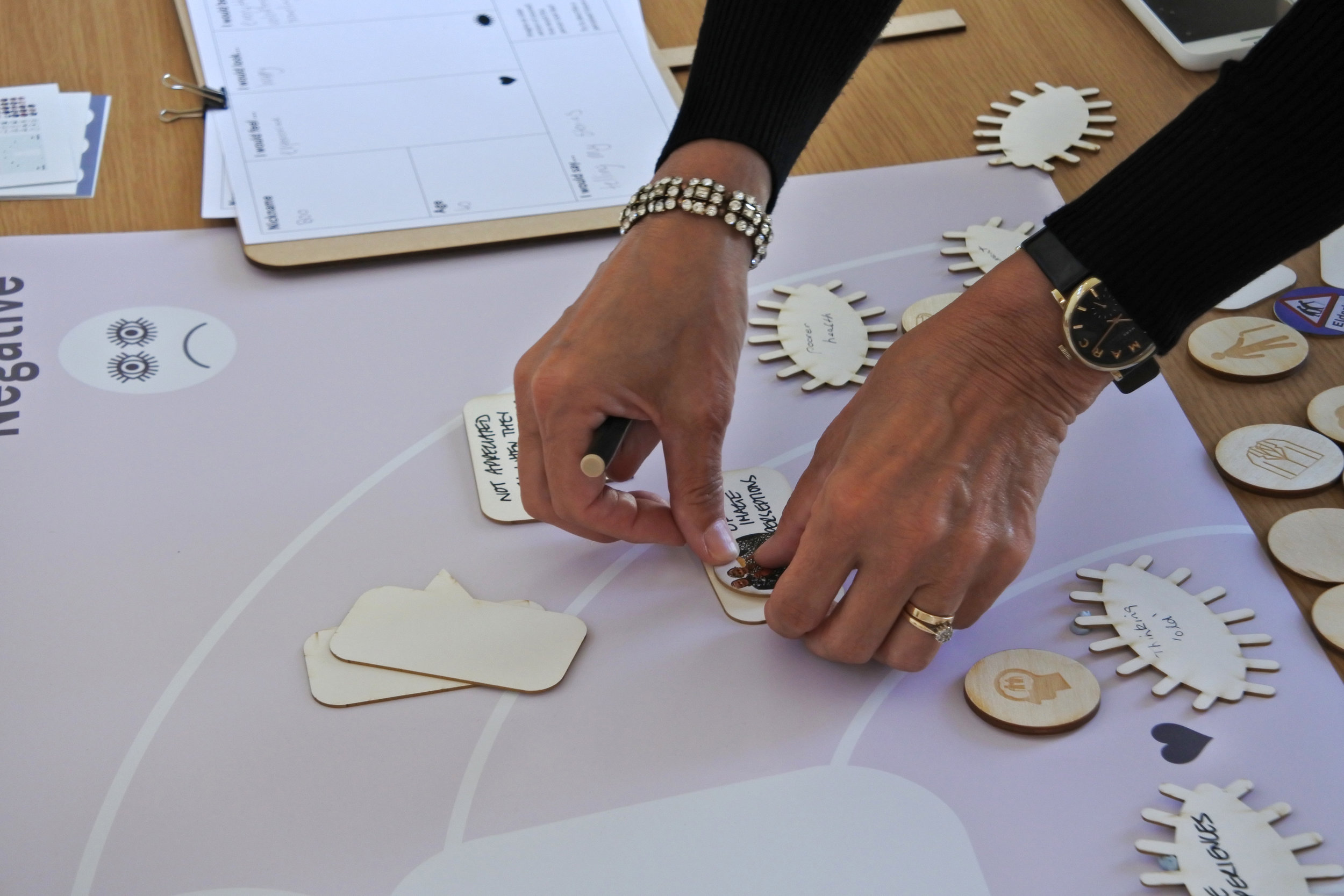
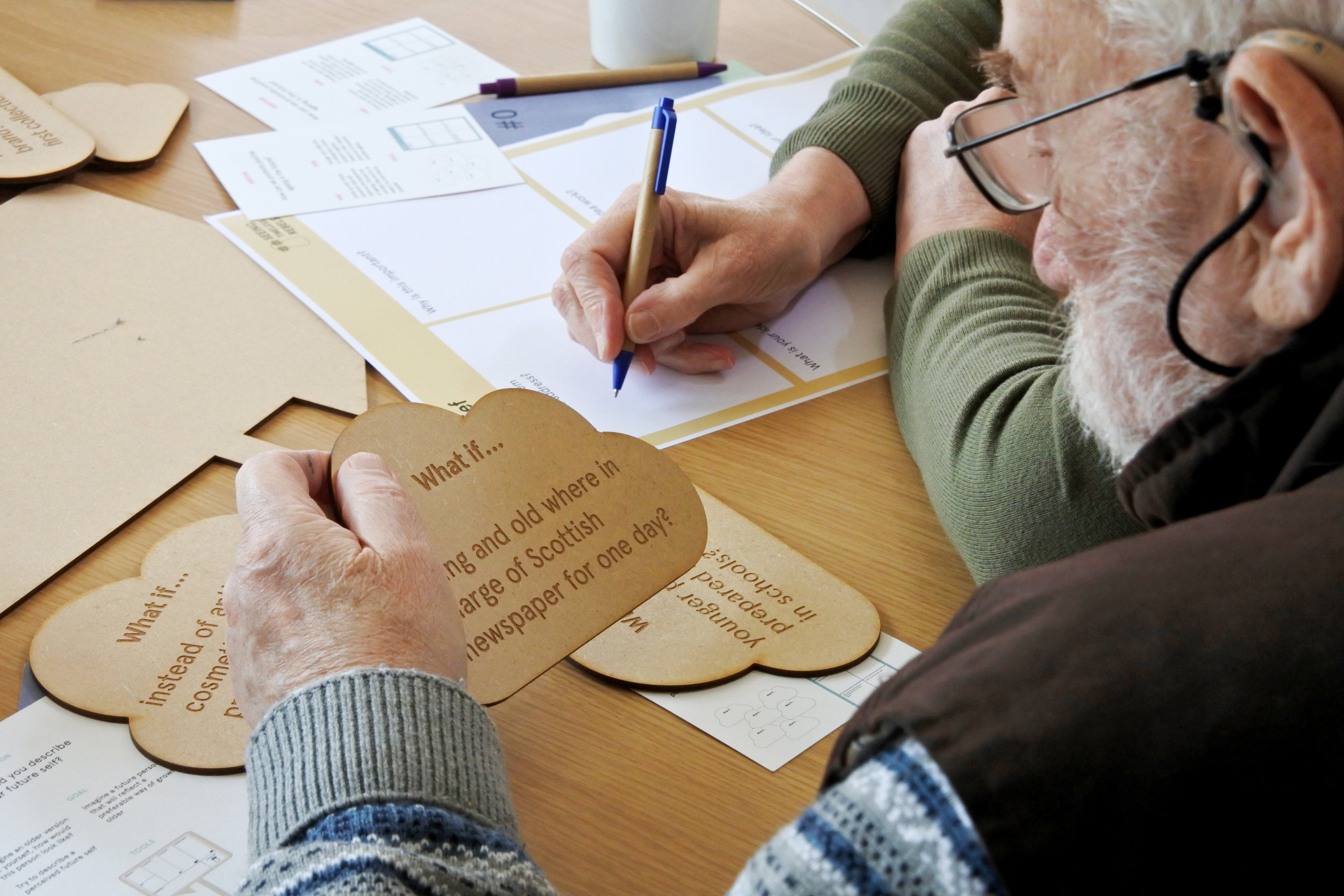
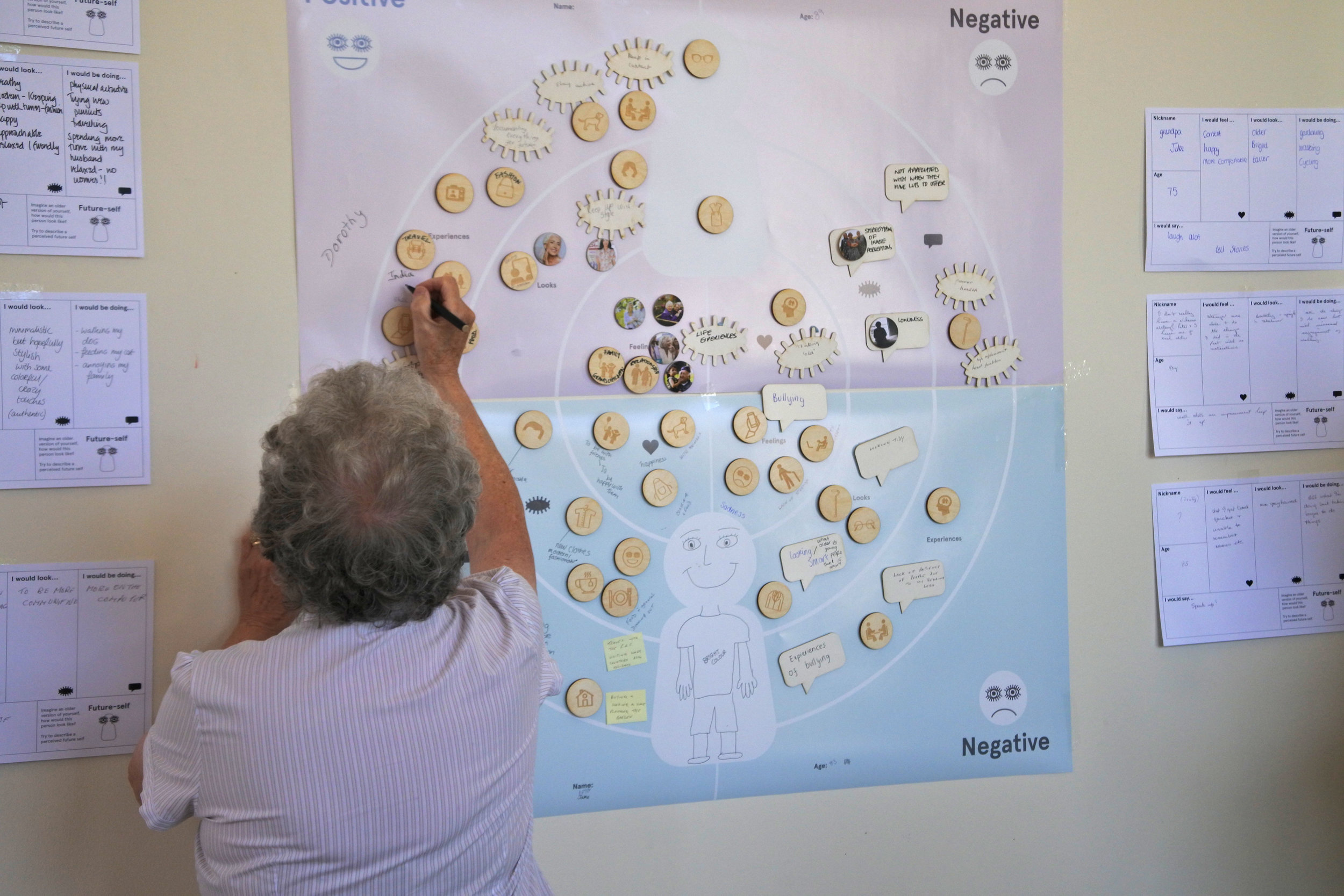
Results
In total three sets of data were analysed: visual data through thematic mapping, conversational data through thematic analysis and observational data through content analysis.
Stereotyping of older people still exists within the Scottish culture and needs to be addressed. According to the participants a typical older person is a woman with an average age of 75 and over (slide 1). According to the participants the media represents an unrealistic voice of growing older, ageing is often related to the story of decline and they experience a language barrier between the generations (slide 2). In addition, reflecting on the engagement tools applied in this intergenerational and participatory process, they can function as a tool for co-analysis, evoke curiosity with participants, and stimulate group dynamics in a workshop (slide 3).


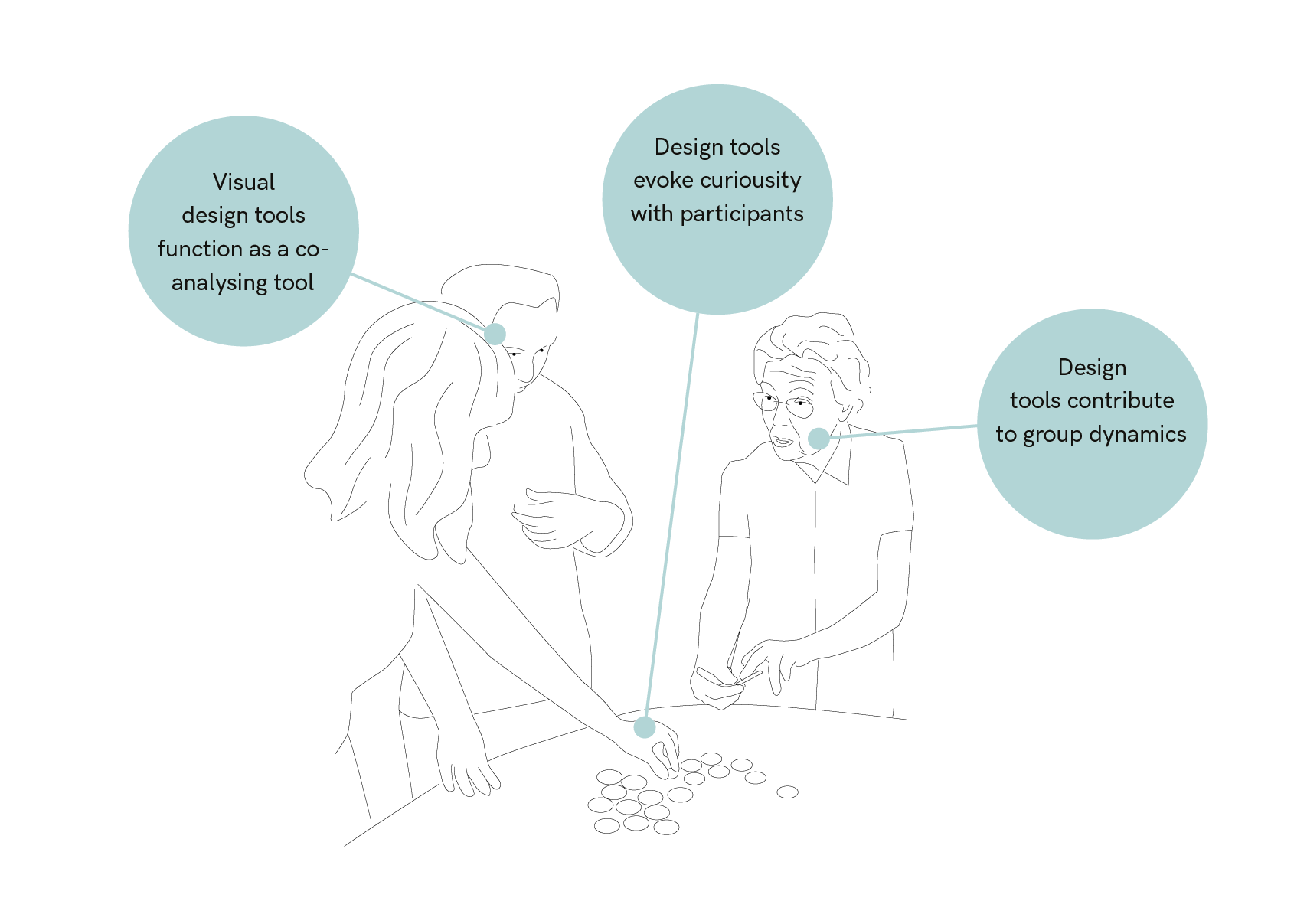
RECOMMENDATIONS
The analysis resulted in a set of design recommendations to improve the visual representations of older people (80+) and could support positive perceptions towards ageing. The recommendations are particularly valuable for organisations who want to reduce the stigma of ageing and can be useful for practitioners e.g. senior services, advertisement agencies, schools and communities, working with younger and older people. For digital designers these recommendations need to be considered when designing digital platforms or products for older people. Furthermore, the recommendations are based on people’s personal subjective perceptions and can strengthen the position of future design concepts by sharing a personal voice.



I asked two professionals who I interviewed in the beginning of the research project to share their reflections about the practical usage of the recommendations, see below their responses.
“I do not know of anyone working in the area of your recommendations in a coordinated and systematic manner. That suggests to me that they are both appropriate and necessary. ”
“I had to prepare a display for the afternoon so was very aware of the need to catch people’s attention in a visual way, and I am pleased to see that I covered all three recommendations with my display materials!”
Returning back to Boo (14), one of the younger participants who was afraid of falling for older age stereotypes, shared after the workshop that she “learnt that old people aren’t that bad”. In addition, Dudu (80) had not perceived the elderly warning sign on the streets as a form of visual ageism but now, after participating in this project, it made her think differently. This means that an intergenerational and participatory process has inspired both age groups to rethink their perspectives of ageing.
The research project “Seeing Timeless Rebels” offers insight into how society can radically change the way older people are represented in the media, and inspires intergenerational engagements to stimulate positive perceptions towards ageing.
The research has been conducted during my time as a full-time Masters of Research (MRes) student at The Glasgow School of Art’s Innovation School based in Forres and is partially funded by DHI.
For more information about the project please contact:
Yoni Lefevre I y.lefevre@gsa.ac.uk
Supervisors: Dr. Tara French and Gemma Teal
The Innovation School, The Glasgow School of Art
Master of Research (MRes)
December 2018






